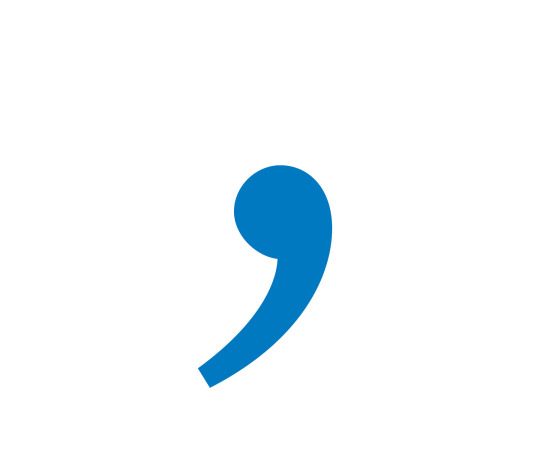
Commas are a little bit like our smartphones: we use them every day, but few people have any idea how they really work. Everyone loves the period for its stalwart utility; semicolons are the provenance of the pretentious and can be largely ignored. But the comma? We all need them and we all use them, but ask ten people what commas are for and you’ll likely get ten different answers. This is largely because comma usage is stylistic and, like many aspects of English grammar, ever-evolving to suit modern linguistic needs. As much as I’d love to take a deep dive into the history of this little punctuation tool – starting with St. Augustine’s 4th century moral panic over misinterpretations of Biblical text – the good news for you test-takers out there is that there’s a fairly small set of very clear rules that you will need to know to answer every comma question on the SAT and the ACT. Let’s begin with perhaps the most confusing aspect of comma usage found on either test: connecting clauses.
Connecting clauses
This is not the first thing that most people think of when they think about commas, but that’s precisely why it’s the most frequently tested aspect of comma usage. Luckily, for purposes of the ACT and SAT, the rules you’ll need to know here are relatively straightforward (with few exceptions).
Dependent clause to independent clause:
When I get home from school, I like to get right down to studying grammar for four or five hours.
Because rent is so expensive in the city, I’ve decided to live in a van down by the river.
A dependent clause (quick reminder: a clause is a group of words that contains a subject and a predicate) that leans against an independent clause should always be separated with a comma.
Independent clause to independent clause:
Sometimes it is really hard to think of example sentences, but other times, it is really easy!
The Cretaceous period might be my favorite age of dinosaurs, but the Jurassic period is also pretty cool.
Arlo loved to swim in the sea, so he was excited to move to San Diego.
Two independent clauses can be mashed together in several delightful ways, but when using commas, they need to be connected with a coordinating conjunction (for, and, nor, but, or, yet, so) and followed by a comma.
Relative clauses
Relative clauses are a subcategory of dependent clauses that begin with a relative pronoun such as who, that, which, where, or when. The rules that govern relative clauses are somewhat complex, but for standardized testing, you just need to remember two basic rules:
1. If your relative clause begins with “that,” you won’t need a comma. If it begins with “which,” you will need a comma.
Mordechai loved watching movies that were made in the Eighties.
Mordechai loved watching Back to the Future, which was made in the Eighties.
2. If your “who, where, when” clause is crucial to the identification of the noun, then there is no need for commas. If it is additional information or detail, then you will need commas.
People who believe in vast government conspiracies probably make poor jurors.
Mortimer, who loves reggae, thinks that aliens landed at Roswell, New Mexico fifty years ago.
In the first example, eliminating the relative clause would make it difficult to identify the specific subject of the sentence. It would read “People probably make poor jurors,” which is improbable. In the second example, Mortimer’s love for reggae is not essential information to the main purpose of the sentence. Without that relative clause, the sentence “Mortimer thinks that aliens landed at Roswell …” still makes perfect sense.
Simple, right? That’s all you need to know when it comes to clauses and commas on either test. Review and test your mastery with some of these practice questions (from a past test):
1) The nebula, is home to thousands of young stars, is often called a galactic “nursery.”
A) NO CHANGE
B) nebula is home to thousands of young stars, and
C) nebula, home to thousands of young stars, and
D) nebula, home to thousands of young stars,
2) At first glance a Renaissance fair, looks a lot like a theme park.
A) NO CHANGE
B) glance, a Renaissance fair,
C) glance, a Renaissance fair
D) glance a Renaissance fair;
3) Nancy Drew, the teenage heroine of heaps of young adult mystery novels, is alive and well and still on the job.
A) NO CHANGE
B) novels is alive
C) novels, is alive,
D) novels is alive,
4) Imagine the excitement in 1902 when audiences first saw Le Voyage dans la lune (A Trip to the Moon), a groundbreaking movie produced by Georges Melies.
A) NO CHANGE
B) 1902, and when
C) 1902, which
D) 1902, where
5) Conversely, if we were running late for an appointment. She would chide us by saying, “Get a move on.”
A) NO CHANGE
B) appointment; she
C) appointment and she
D) appointment, she
ANSWERS:
D
C
A
A
D